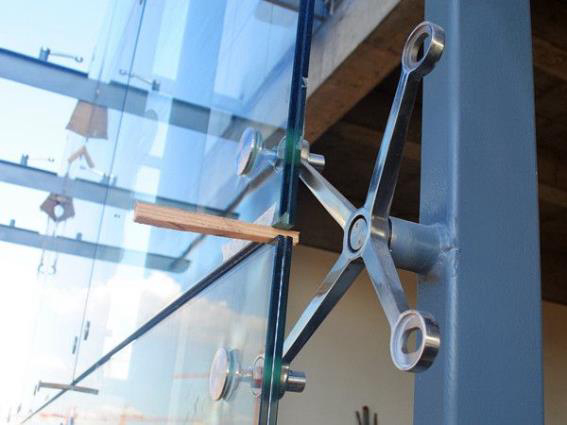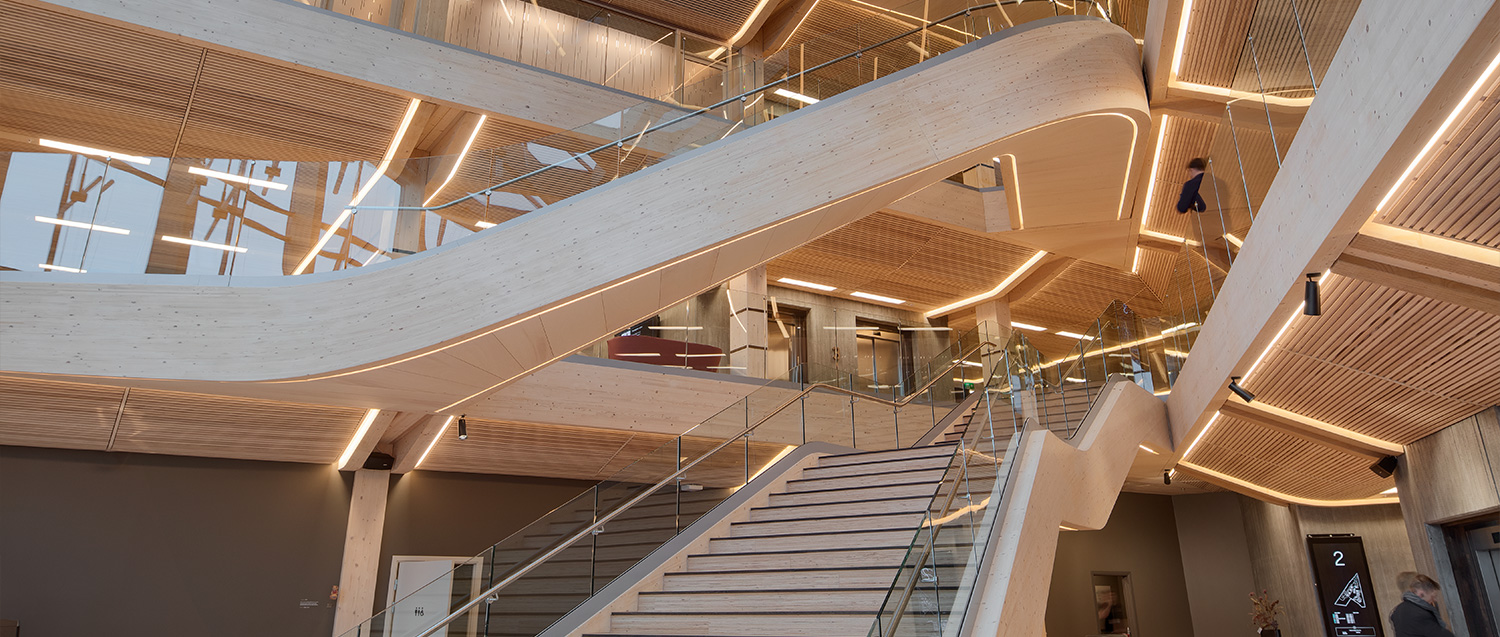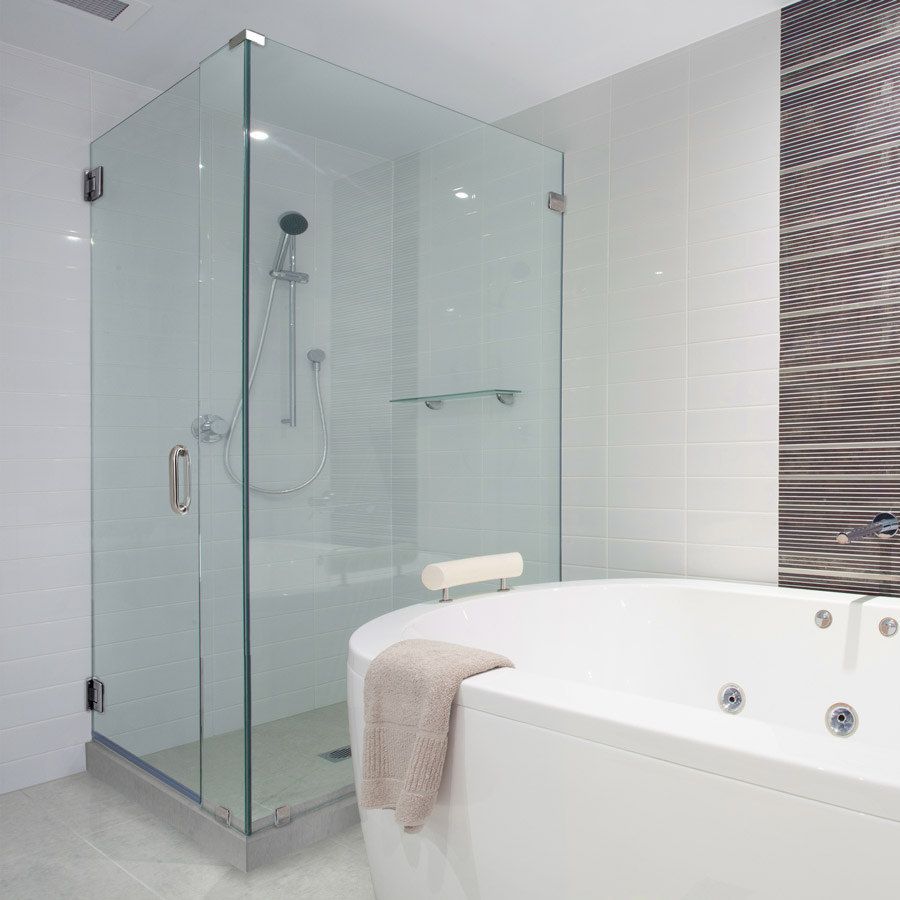Introduction for applications of stainless steel
Stainless steel, with its versatility and durability, stands as a cornerstone material in various industries, offering an array of applications that continually surprise and innovate. For businesses in stainless steel distribution, glass supply, metal storefronts, and beyond, understanding the diverse applications of stainless steel is pivotal.
According to recent market research, the global stainless steel market size was valued at over $100 billion in 2023 and is projected to witness substantial growth in the coming years.
In a real-world example, the iconic One World Trade Center in New York City stands tall as a testament to the architectural prowess of stainless steel. Featuring a stunning facade comprising over 45,000 stainless steel panels, this modern marvel showcases the material's resilience and aesthetic appeal on a grand scale.
Such examples abound, illustrating the indispensable role of stainless steel in shaping the landscapes of our cities and the functionality of our daily lives.
In this blog, I will cover some innovative applications of stainless steel, benefits for industries.
Stainless steel properties & stainless steel used for?
Do you know that stainless steel is about 3 times heavier than aluminum? It can be recycled endlessly, making it the green material of choice for the construction industry.
Properties
1. Stainless steel has good corrosion resistance. It can resist erosion from oxygen and water, as well as acids and alkalis, salt water, and other substances.
2. Stainless steel has good mechanical properties. It is strong, hard, and tough, and can be machined and molded in many ways.
3. Good processing performance: stainless steel can be molded and processed by forging, drawing, and cold drawing ,which is suitable for the manufacture of complex shapes.
Stainless Steel in Architecture Description


Architectural example of stainless steel
The Louvre Pyramid located in Paris, France, stands as a striking testament to the innovative Applications of Stainless Steel in modern architectural design. Designed by renowned architect I. M. Pei, this iconic structure was completed in 1989, showcasing a seamless fusion of stainless steel and glass.
Rising approximately 21.6 meters high, the pyramid comprises four triangular stainless steel structures supporting glass panels(spider claw), creating a transparent and light-filled space.
With nearly 700 glass triangles, specially treated to refract light, the Pyramid exhibits a mesmerizing interplay of light and shadow.
Stainless steel glazing fixings are the perfect solution for connecting the glazing to the supporting structure. They are typically four or two-point castings, and they are designed to be strong and secure. Star connectors are the best choice for connecting the glazing to the supporting structure.
They are typically 1.4401-grade solid stainless steel lost wax investment castings, and they are the most reliable option.
Spider webs have three primary movement characteristics that allow the glass to move freely with natural forces. They are the best choice for connecting the glazing to the supporting structure.
Beyond its aesthetic appeal, the Louvre Pyramid serves practical Applications of Stainless Steel as the main entrance to the Louvre Museum, seamlessly integrating modern materials with the historical surroundings.
2. Stainless steel applications for architecture
Stainless steel, revered for its durability and aesthetic appeal, finds versatile applications of stainless Steel in architectural design, enhancing both the functionality and visual appeal of buildings.
Let's explore how stainless steel is ingeniously incorporated into building, captivating the attention of architects and admirers alike.
1. Handrails: Elevating Safety and Style
Imagine strolling up a staircase or along a balcony, your hand gliding along stainless steel handrail.
Beyond its functional purpose of providing safety and support, stainless steel handrails add a touch of elegance to architectural spaces.
2. Drainage and Water Supply Systems: Ensuring Efficiency and Durability
Visualize the intricate network of drainage and water supply systems within a building, seamlessly integrated with stainless steel components. From pipes and fittings to valves and connectors, stainless steel ensures the efficient flow and distribution of water while withstanding the corrosive effects of moisture and chemicals. Its longevity and resistance to rust make it an ideal choice for plumbing applications.

3. Wall Support Products: Strengthening Structures with Stability
Consider the importance of wall support products such as spider claw in maintaining the structural integrity of buildings, especially in high-rise constructions.
Stainless steel brackets, anchors, and fasteners play a crucial role in securing walls, facades, and cladding systems, providing stability and support against external forces such as wind, seismic activity, and thermal expansion.
4. Roofing: Embracing Versatility and Weather Resistance
Its lightweight yet sturdy construction allows for easy installation and maintenance, while its reflective surface helps to reduce heat absorption, contributing to energy efficiency and indoor comfort.
5. Stainless steel reveals its inherent beauty when employed in artistic endeavors
From abstract sculptures to intricate statues, the applications of stainless steel as a medium allow artists to create stunning works of art that captivate the imagination.
These panels find stainless steel used for various aspects of interior design, including wall coverings, elevator cladding, decorative screens, and promotional materials.
With their shiny surface, stainless steel panels impart a modern and visually appealing aesthetic to any environment.
Conclusion
Stainless steel has many uses in buildings:
l Handrails: They're both stylish and safe, making buildings look good while keeping people secure.
l Drainage and Water Supply Systems: It's tough and long-lasting, so pipes made from stainless steel work well for a long time.
l Wall Support Products: Stainless steel adds strength to walls and buildings, making them sturdy and reliable.
l Roofing: It's versatile and can handle all kinds of weather, so it's a great choice for roofs that need to last.
l Artistic Expression: Stainless steel looks great in sculptures and art, bringing a modern touch to creative projects.

Innovative Uses of Stainless Steel in Architecture
Explore how stainless steel can be used in hospitality architecture for structural elements, exterior and interior design features such as screens, ceilings, trims...
Structural Elements:
Stainless steel, known for its exceptional strength, accounts for approximately 50% of all metallic materials used in structural applications within the hospitality sector, according to industry reports.
Its remarkable corrosion resistance ensures that structural components remain intact over time, contributing to a decrease in maintenance costs by up to 30% compared to traditional materials.
Exterior Design Features:
In exterior design, applications of stainless steel screens have seen a surge in popularity, with a 25% increase in adoption over the past five years, as per market analysis. Additionally, stainless steel trims have been shown to enhance building aesthetics, resulting in about 15% increase in property value, as reported by real estate surveys.
Interior Design Features:
Reflective applications of stainless steel ceilings have been proven to increase perceived room brightness by up to 20%, based on studies conducted by architectural research institutes.
Furthermore, the use of stainless steel wall panels has led to a 10% reduction in sound transmission, creating quieter and more comfortable interior environments for guests.

Office Building - Unveiling Stainless Steel's Versatility
In the construction of our office building, stainless steel emerged as a cornerstone material, showcasing its versatility and practicality across various applications.
Exterior Walls:
We opted for stainless steel panels to adorn the office building's exterior walls, not only for their sleek appearance but also for their durability and resistance to environmental factors.
Studies have shown that integrating stainless steel cladding can increase the property value of commercial buildings by up to 15%, underscoring its value as a long-term investment.
Interior Partitions:
Inside the office space, stainless steel partitions were strategically employed to delineate functional areas while maintaining an open and modern atmosphere.
Research indicates that the use of stainless steel partitions can enhance workplace productivity by up to 10%.
Fixtures:
Our selection of stainless steel fixtures, including door handles, handrails, and light fittings, was driven by their durability and aesthetic appeal.
Market analysis forecasts a steady growth in demand for stainless steel fixtures in commercial buildings, with an expected annual growth rate of 8% over the next five years.
In summary, the applications of stainless steel in our office building extend from its external facade to its internal partitions and fixtures, enhancing both functionality and aesthetics.
 Stainless steel in balconies, outdoor patios, railings and etc.
Stainless steel in balconies, outdoor patios, railings and etc.
In the realm of residential architecture, stainless steel emerges as a versatile and indispensable material, adding both functionality and style to modern living spaces.
Let's explore how applications of stainless steel in balconies, outdoor patios, railings, and door hardware in residential apartments.
Balconies and Outdoor Patios:
Stainless steel finds myriad applications in residential balconies and outdoor patios, enhancing both aesthetics and durability. Market research indicates that the demand for stainless steel railings has witnessed a steady growth of 10% annually over the past five years, reflecting its popularity among homeowners and designers alike.
Additionally, applications of stainless steel for balcony floors and outdoor furniture ensures resistance to corrosion and weathering.
Railings:
Stainless steel railings serve as essential safety features in residential apartments, offering sturdy support and visual appeal. According to industry reports, stainless steel railings have become a preferred choice for residential projects due to their durability and modern aesthetic.
Moreover, advancements in stainless steel manufacturing technologies have led to increased customization options, allowing homeowners to tailor railings to their specific design preferences.
Door Hardware:
In residential apartments, stainless steel door hardware is really important for both functionality and design.
Market analysis shows that the global market for stainless steel door hardware is expected to grow at a CAGR of 6.8% from 2023 to 2026 because people want durable and stylish door accessories.
Stainless steel door handles, hinges, and locks are really durable, secure, and easy to use, which makes the apartment look better and makes it easier for residents to use.
Conclusion
In short, stainless steel used for residential apartments for everything from balconies and outdoor patios to railings and door hardware.
With its durability, versatility, and contemporary appeal, stainless steel makes living spaces more comfortable and stylish for residents.
Stainless steel used for Parks--structures, benches, handrail...

Park Structures:
Stainless steel is used a lot in the construction of park structures like pergolas, gazebos, and shelters. IBISWorld, a market research firm, says that by 2026, the global market for stainless steel structures in public spaces will be worth about $5.2 billion.
It provides shade and shelter for park visitors and also makes the landscape look modern and sleek.
Benches:
Stainless steel benches are a popular feature in parks because they're durable and easy to take care of. A Parks and Recreation Magazine survey found that 85% of park managers prefer stainless steel benches because they last a long time and don't get damaged easily.
Plus, stainless steel benches look good with the natural surroundings, adding a modern touch to the park.
Handrails and Fences:
Stainless steel handrails and fences are the perfect solution for keeping people safe and secure in park settings.
A study published in the Journal of Urban Planning and Development found that parks with stainless steel handrails had 30% fewer accidents than those with traditional materials.
Signage:
Stainless steel signage provides clear and durable wayfinding solutions in parks. According to a report by Sign Research Foundation, parks that invest in stainless steel signage see a 40% increase in visitor satisfaction due to improved navigation.
Conclusion
The Applications of Stainless Steel in parks extend across various elements, including structures, benches, handrails, fences, signage, playground equipment, trash receptacles, lighting fixtures, and bicycle racks.
Explore the countless possibilities of stainless steel in park design and discover how this versatile material can transform public recreational areas.
Stainless steel applications--A range of hardware for sliding doors
key Components
1. Stainless Steel Rollers:
Stainless steel rollers ensure smooth sliding door operation, even in damp bathroom environments. Their corrosion-resistant properties and durability make them ideal for long-term use in bathrooms.
2. Tube Clamps for Stainless Steel Rails:
Tube clamps secure stainless steel rails, providing stability and longevity to sliding door systems. These clamps, crafted from premium stainless steel alloys like 304 or 316, ensure reliable performance in various bathroom conditions.
3. Stainless Steel Door Stops:
Stainless steel door stops prevent sliding doors from overextending and protect adjacent surfaces.
4. Anti-Jump Poles in Stainless Steel:
Stainless steel anti-jump poles enhance safety by preventing sliding doors from derailing.
These poles, made from high-quality stainless steel, offer both functionality and durability in bathroom environments.
5. Stainless Steel Connectors for Glass Panels:
Connectors made from stainless steel secure glass panels in bathroom sliding door systems combine strength and elegance.

Conclusion
Choose chrome, matte black, bronze, brushed nickel, or other finishes to match interior aesthetics. the use of stainless steel in bathroom sliding door hardware offers durability, reliability, and modern design, enhancing the overall functionality and aesthetics of bathroom spaces.
Stainless steel applications--Vanities and Sinks
1. Stainless Steel Vanities and Sinks: Practical and Stylish Bathroom Solutions
Stainless steel vanities and sinks offer a winning combination of hygiene, low maintenance, and modern style for bathrooms.
2. Hygienic: Stainless steel naturally resists bacteria and mold, ensuring a clean and sanitary surface with minimal effort.
3. Low Maintenance: Easy to clean with just soap and water, stainless steel vanities and sinks save time and maintain their sleek appearance for years to come.
The applications of stainless steel vanities and sinks extend beyond mere functionality to encompass hygiene, ease of maintenance, and modern aesthetics.
Explore more surface treatments! Reach out to us for a wider array of options tailored just for you.
By choosing stainless steel fixtures for bathrooms, homeowners and designers can create spaces that are not only stylish and contemporary but also practical and hygienic, enhancing the overall comfort and enjoyment of the bathroom environment.
Stainless steel used for furniture and decoration
Explore the use of stainless steel in furniture design
Chairs:
According to market research by Grand View Research, the global market for stainless steel furniture is expected to reach $26.5 billion by 2027, driven by factors such as durability, corrosion resistance, and contemporary design.
Stainless steel chairs, with their sleek appearance and long-lasting performance, are commonly used in various settings, including modern offices, outdoor cafes, and residential dining areas.
Tables:
A study published in the Journal of Interior Design highlights the growing preference for stainless steel tables in interior design projects.
They find applications in diverse settings, including restaurants, cafes, conference rooms, and residential kitchens.
Shelving Units:
The latest research from the National Kitchen and Bath Association (NKBA) reveals that stainless steel shelving units are becoming increasingly popular in kitchen and bathroom renovations.
With their hygienic properties and resistance to moisture and corrosion, stainless steel shelving units offer practical storage solutions that meet the demands of modern living.
Frequently Asked Questions
Which elements are present in stainless steel?
Stainless steel primarily consists of iron, chromium, and nickel, along with varying proportions of other elements, contributing to its corrosion resistance and mechanical properties.
Can stainless steel rust?
Yes, stainless steel can rust, but it's more resistant to corrosion compared to regular steel.
What is inox?
Essentially denotes stainless steel or any alloy that is resistant to corrosion.













 Stainless steel in balconies, outdoor patios, railings and etc.
Stainless steel in balconies, outdoor patios, railings and etc.



















